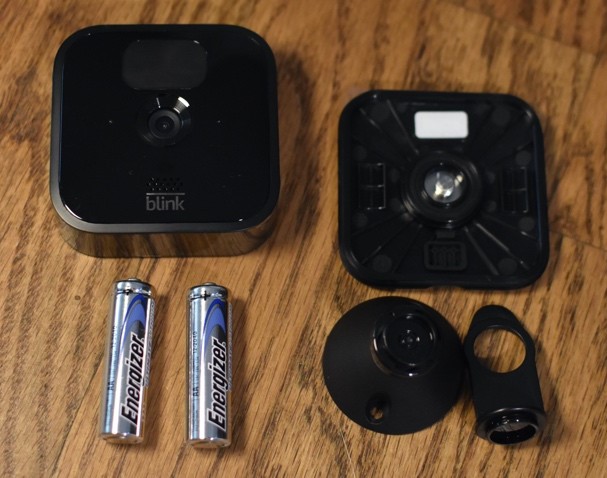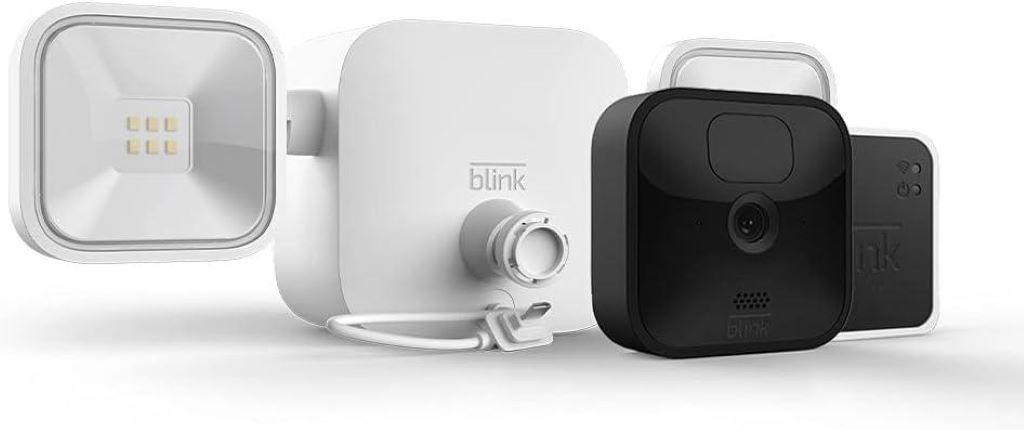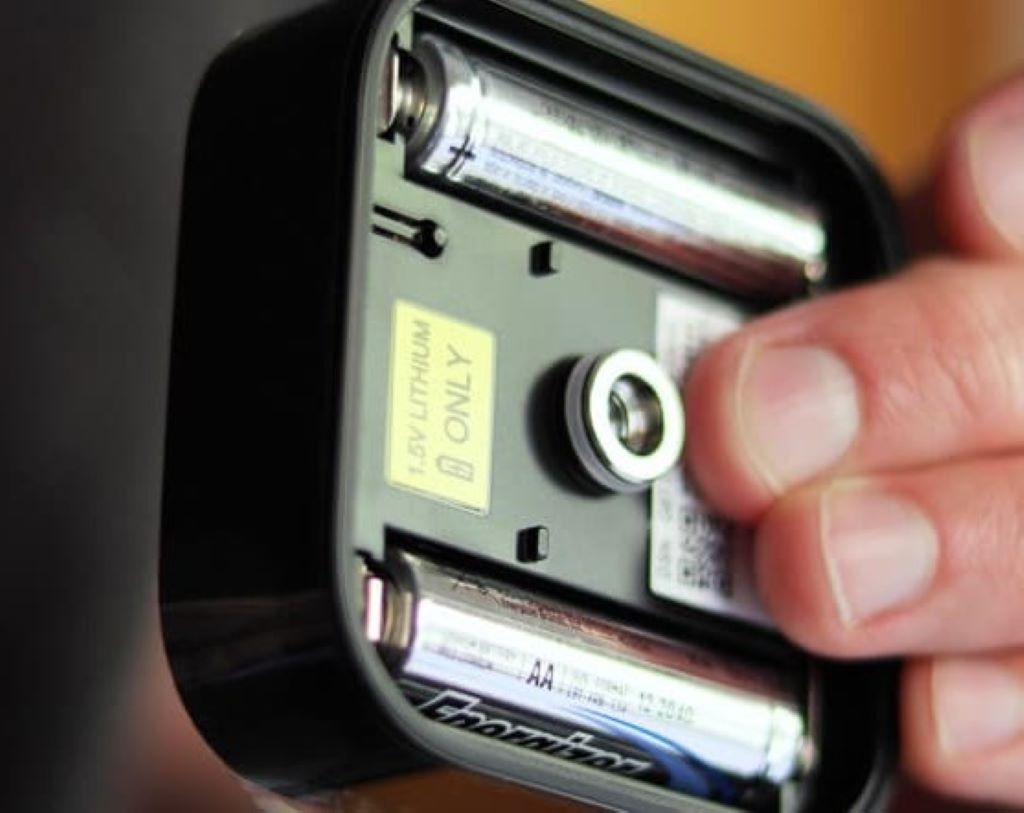
06 Dec What to Expect from Blink Camera Battery Life
The text discusses the battery life of Blink wireless security cameras and provides tips on how to extend their lifespan. The article mentions that under standard conditions, the battery life of Blink cameras is decent compared to other battery-powered security cameras. However, five factors can drain the camera’s batteries faster, including frequency of motion events, temperature extremes, live view usage, operating conditions, and camera settings. The article then provides 11 ways to extend the blink camera battery life by being smart about camera placement, settings, and usage. Finally, the article reassures the reader that Blink’s indicator lights will communicate clearly when power is low.
How Long Do Blink Camera Batteries Last?
First, let’s set a baseline for standard Blink camera battery life under normal conditions. In my experience, here’s how long they tend to last depending on model and battery type:
- Blink Mini: 2 years (non-removable)
- Blink Indoor: about 2 years (2 AA lithium)
- Blink Outdoor: about 1.5-2 years (2 AA lithium)
- Blink Video Doorbell: about 1-2 years (2 AA lithium or 2 CR123A lithium)
Those estimates are for batteries used under common conditions in a temperate climate. You’ll get the longest battery life when motion events are infrequent, live view is rarely used, and operating temperatures are moderate.
So if you’re strategic about camera positioning and usage based on some of the tips later in this article, you can comfortably expect 1-2 years from your Blink cameras before needing fresh batteries.
Next let’s look at 5 usage factors that can decrease battery lifespan if you’re not careful.
5 Factors That Drain Blink Batteries Faster
While the above estimates reflect moderate use cases, battery life can take a big hit if cameras trigger motion constantly, endure temperature extremes, or get used heavily for live viewing and shooting lots of video clips.
Here are 5 common factors that put more strain on Blink camera batteries:
Frequent Motion Triggers
One of the biggest battery drains is the camera frequently firing up to capture motion events. The motion detector and camera use extra juice sending alerts and recording clips.
Batteries may only last a few months if motion is triggered dozens of times per day. I learned that lesson after installing a camera facing my neighbor’s garbage cans! Raccoon City got old real fast even with cute bandits.
Temperature Extremes
Colder winter temperatures can sap around 20% faster battery drain according to Blink. The lithium batteries have to work harder when it’s cold.
So an indoor camera rated for 2 years may only last around 18 months over several winters. Outdoor cameras also have to endure even colder temps resulting in slightly shorter battery lives.
On the other end, excess summer heat can also tax batteries above their comfort zone requiring more effort to function.
Frequent Live View Usage
While not continuously recording, tapping into the live view pushes more video data for a sustained period which uses extra battery reserves. So avoiding the temptation to peek in too often will help the batteries last longer.
Challenging Operating Conditions
Placement in dark environments requires more infrared illumination so night vision leans more heavily on the batteries over daytime operation.
And wireless range can strain things too. Maxing out the WiFi distances makes the signal work overtime to stay connected which saps a little extra juice over time.
Additional Features or Higher Video Quality
Enabling battery-draining features like motion zones, custom activity alerts, and faster recording speeds take a toll.
Upgrading to a Blink Subscription Plan also permits 60 days of video clip storage in the cloud along with options for 1080p recording quality and advanced motion detection which tax the battery further.
So if battery life is a concern, disabling some features may help batteries go the distance longer before a swap out is needed.
11 Tips to Extend Blink Camera Battery Life
Luckily, there are some easy ways to work around the battery-munching culprits above if they apply to your situation. With a few adjustments, you can squeeze quite a bit more life out of your Blink camera batteries.
1. Locate Cameras in Low-Traffic Areas
Carefully consider where you place cameras to avoid an endless parade of motion alerts. I found my outdoor cameras lasted 6 months longer after repositioning them to ignore minor activity from a neighboring driveway and only capture nearby movement.
2. Refine Motion Zones
If relocating the full camera view isn’t possible, exclude unwanted motion areas by tightening up the detection zone in either direction. Just be aware this requires a paid Blink Subscription plan.
3. Disable Unneeded Alerts
Customize notifications to your needs by disabling sound alerts during certain hours or eliminating alerts from known frequent flyers like local wildlife. This prevents batteries from constantly firing up the camera if 24/7 monitoring isn’t required.
4. Limit Live View Usage
Resist the temptation to peek in too frequently! Tap that live view button only when truly needed. This is hard as the convenience is super addicting. But every 30 seconds saved makes a difference.
5. Use Optimal Wi-Fi Range
Experiment with camera positioning to maintain a strong signal without maxing distances. Batteries work harder at wireless range limits to stay connected. Find the camera sweet spot for your home layout.
6. Add a Solar Panel Charger (Outdoor Cams)
One slick way to slash battery swaps for Outdoor cameras is adding an optional solar panel charger. This gathers power from Old Sol himself, harnessing free sunlight to perpetually top off the batteries.
7. Use Lithium Batteries
Always go lithium for maximum battery life! Lithium AA cells last over 3 times longer than alkaline AA batteries in Blink cameras. The extra cost is totally worth it for that extended runtime.
8. Buy Extreme Temp Batteries (Outdoor Cams)
For colder winter climates, buy lithium batteries marketed as extreme or cold weather. These function more efficiently in freezing temperatures compared to standard lithium AAs.
9. Turn Off Status Light in App
Believe it or not, that little status light on the camera front pulls power 24/7 for battery level indications. Disabling it squeezes a tad more usage time from already taxed batteries.
10. Use Lowest Acceptable Video Quality
If 1080p HD quality isn’t hugely important for your needs, dial things down to 720p resolution. Lower video quality means smaller video clips requiring less effort to transmit and store.
11. Disable Unessential Features
Turn off any battery-draining features not critical to your use case. This may mean nixing adjustable motion sensitivity, activity zones, faster recording speeds, lengthier clip storage or certain alert customizations if the tradeoff makes sense.
When to Replace Blink Camera Batteries
With average use, most Blink cameras will operate for 1-2 years before needing a battery refresh as mentioned earlier. But how do you know specifically when your camera power is running low?
Luckily Blink provides clear low battery indications right on the camera itself thanks to handy LED status lights.
As soon as batteries reach around 25% capacity remaining, the LED will blink red. This means it’s a good idea to purchase fresh lithium cells for an upcoming swap.
Once drained under 10-15%, the camera LED will glow solid red indicating reserves are completely exhausted. After this point, the camera will become unresponsive until you replace the dead batteries.
So keep an eye out for blinking red as your early warning to buy replacement batteries. Solid red means install them ASAP before the camera goes dark!
FAQs
What is the shortest Blink camera battery lifespan I can expect?
If encountering multiple battery draining factors, Blink cameras may start blinking red low battery warnings roughly 3-6 months in. Maximum lifespan could dip as low as 6-9 months for problematic installs triggering motion constantly in extreme cold while heavily live streaming in weak WiFi signal areas.
Do Wi-Fi assistant devices like the Blink Sync Module 2 affect battery life at all?
No, sync modules have no direct effect on individual Blink camera battery life capacities or drain. The sync module connects your Blink system to Wi-Fi for remote access. It’s powered separately by an AC outlet. The module does not draw power from or alter the lifespans of wire-free camera batteries in any way.
Should I remove batteries from Blink cameras while not in use?
For indoor cameras, removing batteries during long vacations can help conserve lifespan somewhat while the camera goes unused. But it also means resetting the clock every time batteries are reinserted. Outdoor cameras are better left powered year-round to capture unexpected motion during an absence which defeats their security purpose otherwise.
Is solar power my only option for continuous operation?
If recording 24/7 is essential, wired power kits are also available to provide uninterrupted AC power. Outdoor cameras can utilize a wired mount while Indoor cameras work with a power adapter cable. But of course this introduces wiring considerations back into camera placement.
How will extreme cold or heat impact my Blink Video Doorbell?
The Doorbell operates similarly to Outdoor cameras in this regard – lithium batteries drain faster in high and low temperature extremes. So expect 20-30% shorter lifespans in very cold winter or hot summer weather. Adding an overhead covering to block direct sun or snow buildup can help mitigate premature battery exhaustion.
In Summary
To get the most longevity from your Blink camera batteries, there are a few things to keep in mind. First, try to use the cameras moderately without constant motion triggers. This will help conserve battery life. Additionally, it’s important to maintain moderate operating temperatures and limit live view tap-ins. The importance of security cameras for your business cannot be overstated, and optimizing their functionality by enhancing Wi-Fi strength, incorporating solar panels for outdoor cameras, selecting appropriate lithium batteries, and disabling unnecessary features, including status lights, not only ensures a robust surveillance system but also maximizes blink camera battery life for uninterrupted protection.




